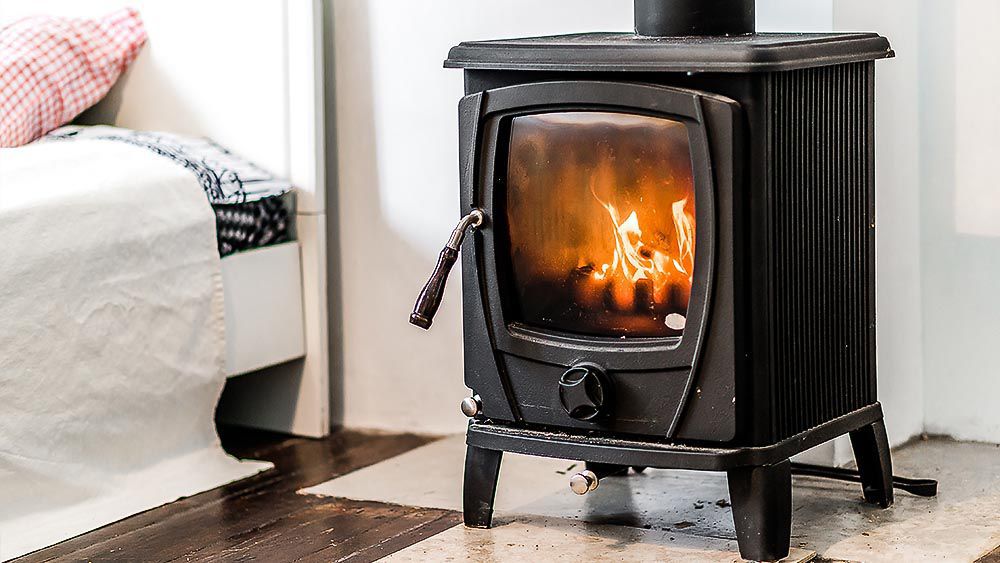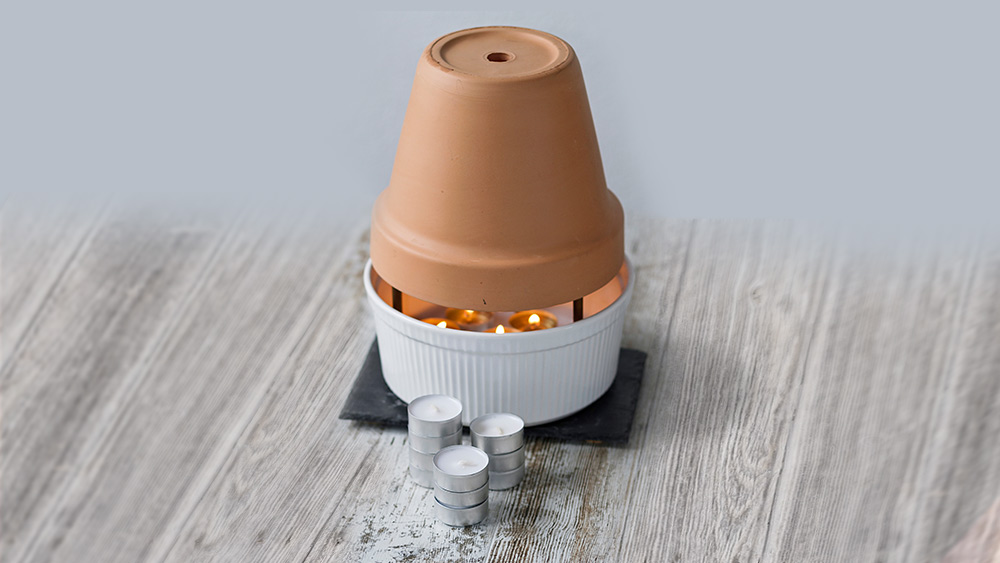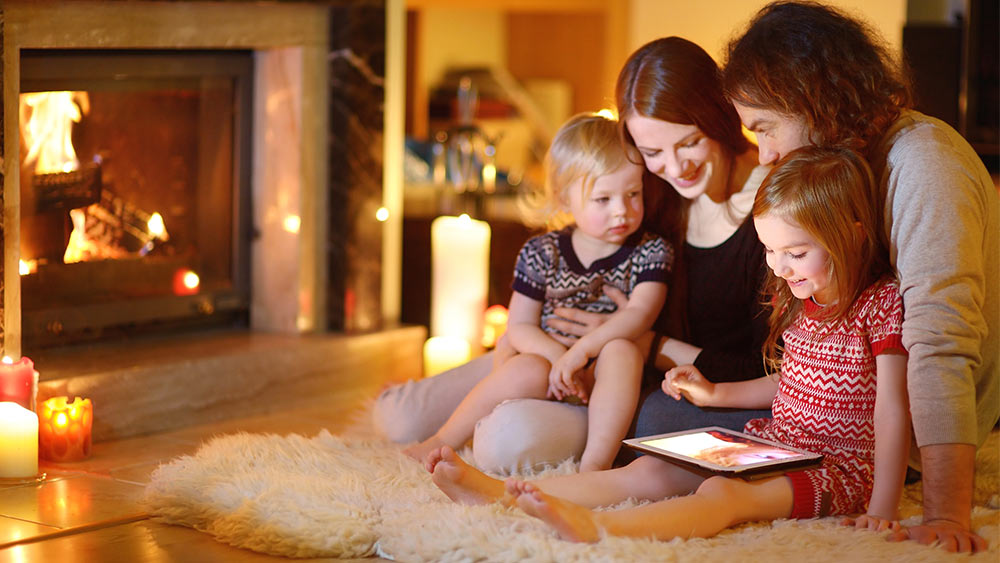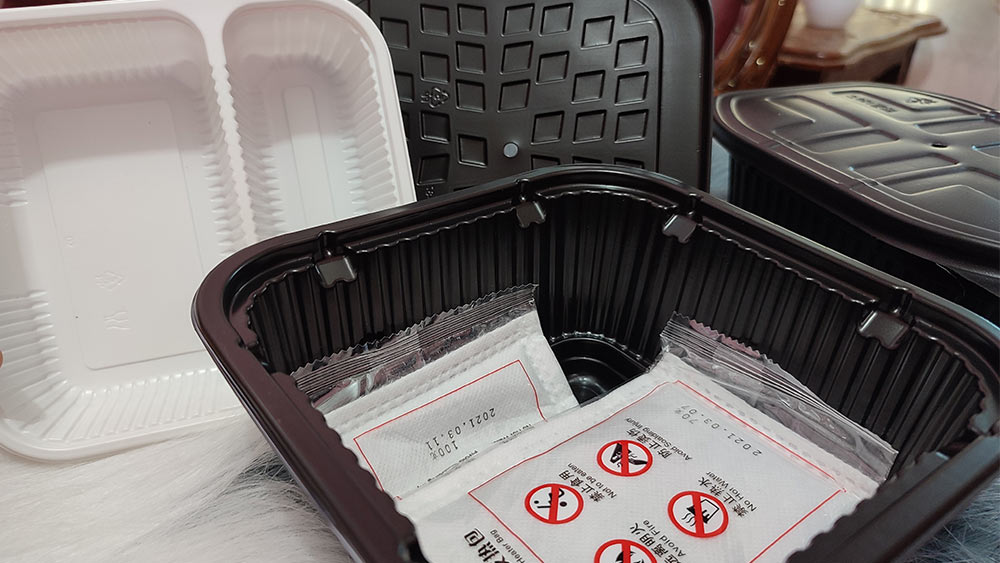
Key Takeaways
- Kerosene, propane, pellet, and catalytic heaters are effective emergency heaters.
- Using a burner can with candles or heated rocks can provide localized warmth.
- Ensure proper ventilation and use smoke detectors when using alternative heating sources.
Blizzards can knock down electricity lines, often leading to power outages that leave people without heating systems for hours. Sitting in extremely cold temperatures indoors for prolonged periods is not only inconvenient but can also be dangerous to your health. Children and the elderly are especially vulnerable. Fortunately, there are various methods to heat a house without electricity. Some involve DIY tasks, while others include setting up a simple non-electric backup heater. This article will guide you through alternative heat sources for power outages to keep your home habitable, even in freezing weather.
- 1. Indoor Kerosene Heater
- 2. Opt for a Propane Heater
- 3. Use a Pellet Stove
- 4. Go for Catalytic Heaters
- 5. Use Soapstone
- 6. DIY Your Heater
- 7. Use Burner Can
- 8. Utilize Rocks for Heating
- 9. Go for Wind Systems
- 10. Passive Solar Heating
- 11. Make a Designated Heating Room
- 12. Cover Yourself in Layers
- 13. Camping Cooking Bags
- 14. Focus on Home Insulation
- 15. Insulate Your Plumbing
- 16. Use Gas Inserts
- 17. Install Backup Generators
- 18. Invest in Emergency Heating Blankets
- Safety Considerations
- In Conclusion
1. Indoor Kerosene Heater
Kerosene heaters are great alternative heat sources during power outages and can also reduce heating bills.
Following all the heating safety tips is crucial when using a kerosene heater. To minimize the release of harmful fumes, it is better to choose a ventless option. To be on the safe side, put your kerosene heater by the window and open it slightly. This will help reduce the accumulation of dangerous fumes inside your living space.
2. Opt for a Propane Heater

If you’re wondering how to heat a room without electricity, propane heaters are an effective alternative heating source; newer models boast an efficiency of over 90%. They are also an affordable and convenient backup heating option. These heaters can quickly heat a medium to large space using liquid propane as fuel.
Whenever using propane heaters, be certain to take all the necessary safety precautions, such as proper storage of propane tanks and adequate ventilation when the heater is in use. Also, look for oxygen depletion and overheating features when purchasing a propane heater.
3. Use a Pellet Stove

Pellet stoves are efficient alternative heat sources for power outages. They run on pellet-based fuel created from recycled sawdust or wood shavings. Pellet stoves come in a variety of sizes and styles, allowing you to find the best heater without electricity option for your house.
When pellets are burned, they produce a good amount of heat without releasing harmful chemicals into the air. While pellet stoves are more expensive than an indoor fireplace or wood stove, their efficiency and usage of clean fuel are worth the cost.
4. Go for Catalytic Heaters
Catalytic heaters require natural gas or propane and a catalyst to work. The catalyst is typically an electrically charged, platinum-coated plate.
While these heaters do use fuel, they are a waste-free way of generating heat as they do not produce any gases. They only speed up the chemical process inside the heater rather than combusting the fuel. This makes them a great heater for power outages.
Catalytic heaters are safe for indoor use as they generate heat without flame. For enhanced safety, you can put them by the half-open window. When using catalytic heaters as alternative heat sources for power outages, keep in mind that they require regular maintenance, just like any other heating equipment.
5. Use Soapstone
Soapstone may sound like an unconventional way to heat without electricity, but it actually works. Soapstone absorbs the heat quite readily and radiates it back to keep you warm. You can keep it near your heating source (like a wood stove) so it captures enough heat. When sleeping, you can turn off the heating source and use the soapstone blocks as a bed warmer.
6. DIY Your Heater

When you have run out of heating options, try DIYing your own heater. With materials that are found in most homes, you can easily create an indoor heater that doesn’t require electricity.
A DIY candle heater is a great way to add warmth to your room. It is one of the most effective emergency heat sources. You will require some light candles and terracotta pots to create this heater. It works by trapping heat from the candles in the clay pot. As clay is porous, it dissipates the heat in the surrounding air, heating up your room.
An alcohol heater is another popular way to heat a room without electricity. It can also help to heat food items during an outage. You just need a metal can, rubbing alcohol, and a toilet paper roll. Put a tissue roll in the can and then fill it with alcohol. Light the alcohol, and your DIY heater is ready!
7. Use Burner Can
Having a biofuel burner can come in handy during a power outage. You can use it to heat your wood or simply leave it on for some time to heat up your space. However, do follow all the safety precautions when using the burner can and keep it out of reach of kids and pets.
When using a fuel-based burner, always choose biofuel, as it is sourced from natural ingredients and does not produce harmful fumes. Also, choose refillable and reusable cans to reduce waste.
8. Utilize Rocks for Heating
For this method, you will need some outdoor space to build a small fire. Gather wood sticks and light the fire. Remember to find some big stones and place them near the fire.
Once the stones are properly heated, bring them inside your room. Do not touch the heated rocks with bare hands; use gloves or a thick towel to avoid burn damage. The heated rocks will radiate heat in your room, keeping it warm.
9. Go for Wind Systems
While solar energy isn’t as effective in winter due to reduced sunlight, wind power can be a good option. You can easily install a small wind system that can generate enough electricity for essential tasks. This electricity can be used to power electric heating appliances, household lights, and other devices.
It can also act as an alternative heat source during a power outage. Window power systems are more environmentally friendly than traditional backup generators and don’t depend on external fuel sources.
10. Passive Solar Heating
Passive solar heating systems aim to capture the sun’s heat within the building’s elements. This heat can be used later on to keep your home warm when the sun is absent while maintaining a comfortable room temperature.
The primary elements of this heating system are a south-facing large window and thermal mass such as concrete, brick, stone, or tile. Thermal mass absorbs the heat from sun rays.
Before using this method, remember that it can only be used if your home gets adequate light in the winter months.
11. Make a Designated Heating Room

Create a designated space where everyone can gather in case of a power outage. Insulate the doors and windows with weatherstripping and add a thick rug to the floor to minimize heat loss.
After the insulation process, add your alternative heat sources, such as a wood stove or a gas heater, to keep yourself warm when there’s no electricity in your area. You can also add sofas and thick blankets for relaxation and mattresses for sleeping. Just make sure to turn off your heating equipment before dozing off.
12. Cover Yourself in Layers

When there’s no proper heating system to heat your home, it’s always better to keep yourself warm by layering on thick clothes. Start with basic thermal wear, then put on a sweater and a jacket, depending on how cold it is.
You can also wrap yourself in warm blankets during a power outage. Opting for thick mittens and warm socks is also important. You can also use electrical hand warmers. Just hold them in your hands or put them in your pocket to transfer heat to your body for increased warmth.
13. Camping Cooking Bags

During power outages, you may not get warm meals without proper heating equipment. In this scenario, consider camping cooking bags. The heat packs can generate heat to boil water, which in turn will help cook food.
These cooking bags come with a heat pack and a tray to put your food, such as pasta or rice, inside. Place the heat pack inside your lunch box. Put water over it. Place the food tray on top of the heat pack and close the box’s lid. After 15 minutes, you will have a warm meal!
14. Focus on Home Insulation
Before choosing alternative heat sources for power outages, ensure your home is adequately insulated. Without insulation, it can be quite hard to retain heat during a power outage, and your backup heating options may not even work properly.
Use foam board insulation on the exterior walls to minimize heat loss. Find air leaks around your house and seal them with caulking. To prevent cold drafts, apply weatherstripping on your windows and doors. Also, place a draft stopper at the bottom of the door and between the window sash and frame. Use insulated shades and thick floor rugs to build a cozy environment.
15. Insulate Your Plumbing
It is not an alternative heat source but a way to protect your house when the electricity goes out in winter.
In colder months, the water supply pipes may freeze or even burst, flooding your home. Insulating water pipes is the key to avoiding this damage; pipe wrap insulation is commonly used. This type of insulation is available in many different materials, such as foam-and-foil pipe insulation, bubble wrap, and rubber pipe insulation.
Once the power is back, you can try using the freeze protection mode that some heat pump models offer. In this mode, your heat pump continuously blows out hot air without consuming much energy, preventing the temperature from falling below the freezing point.
If your mini-split heat pump is connected to a mini-split thermostat such as Cielo Breez Max, you can also control this mode using your phone when you are away from home.
Your best choice to make any mini-split, window,
or portable AC smart. Enhance your comfort and savings.

16. Use Gas Inserts
For a hassle-free upgrade to your existing fireplace, consider installing a gas insert. It connects to your home’s gas line, providing reliable heat without needing electricity. With a simple button press, you can enjoy instant, clean warmth. While a professional is needed for installation, a gas insert is a worthwhile addition, delivering cozy heat and serving as a dependable alternative heat source without electricity.
17. Install Backup Generators
Backup generators become essential during a power outage. Certain models can connect to your home’s electrical system, automatically starting when power is lost, or can pair with an alternative heat source. Given their high power, it’s important to handle installation carefully or hire a professional for setup.
Colin Matei, President of Clean Air Heating & Cooling, says, “I’ve spent years ensuring comfort and safety during harsh winters in the Pacific Northwest. One cost-effective emergency heating solution I recommend is investing in a backup generator to power your heating equipment during outages. These generators are fuel-efficient, reliable, and can be a lifesaver when your main heating system is offline.”
18. Invest in Emergency Heating Blankets
In case of a power outage, it’s always wise to stock up on useful but affordable tools that will help you stave off the cold. Emergency heating blankets are one such tool. They have reflective material on the inside and help you retain heat in an emergency. You can use them however you want, cocoon yourself in them, or use them as a warm cover during the night.
Safety Considerations
When using alternative heat sources to provide your home with warmth, keep in mind to follow the necessary safety precautions:
- To get the most out of your alternative heating sources, read up on them, including instructions. This will help you get a better feel for the equipment and allow you to use it effectively.
- Keep in mind if you are using combustion heaters, then you need to ensure proper ventilation to prevent any carbon monixide poisoning.
- Ensure that your fuel sources are stored in safe areas that are away from sunlight or other ignition sources.
- Invest in battery-operated smoke and carbon monoxide detectors for your home. They will measure the amount of carbon monoxide in your home and inform you if it reaches dangerous levels.
In Conclusion
Alternative heat sources can surely help you stay warm and toasty in winter. When preparing for your home for a power outage in winter, you should choose at least two heating options. For instance, if you are using a propane heater, you can also opt for camping cooking bags to radiate warmth and heat your food. You can always include more backups in case the power issue doesn’t get fixed for days. Also, remember to insulate your home in a timely manner and follow all the precautionary measures when heating your house without electricity.








